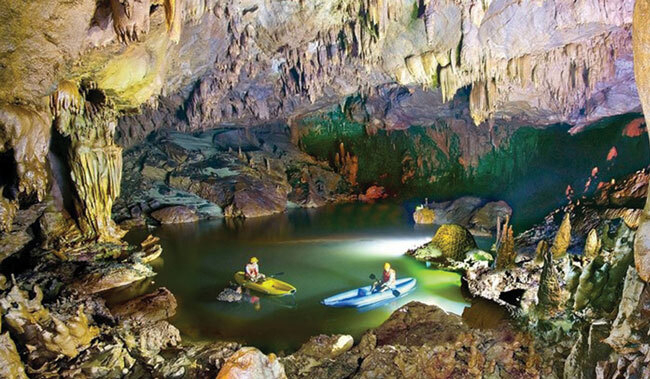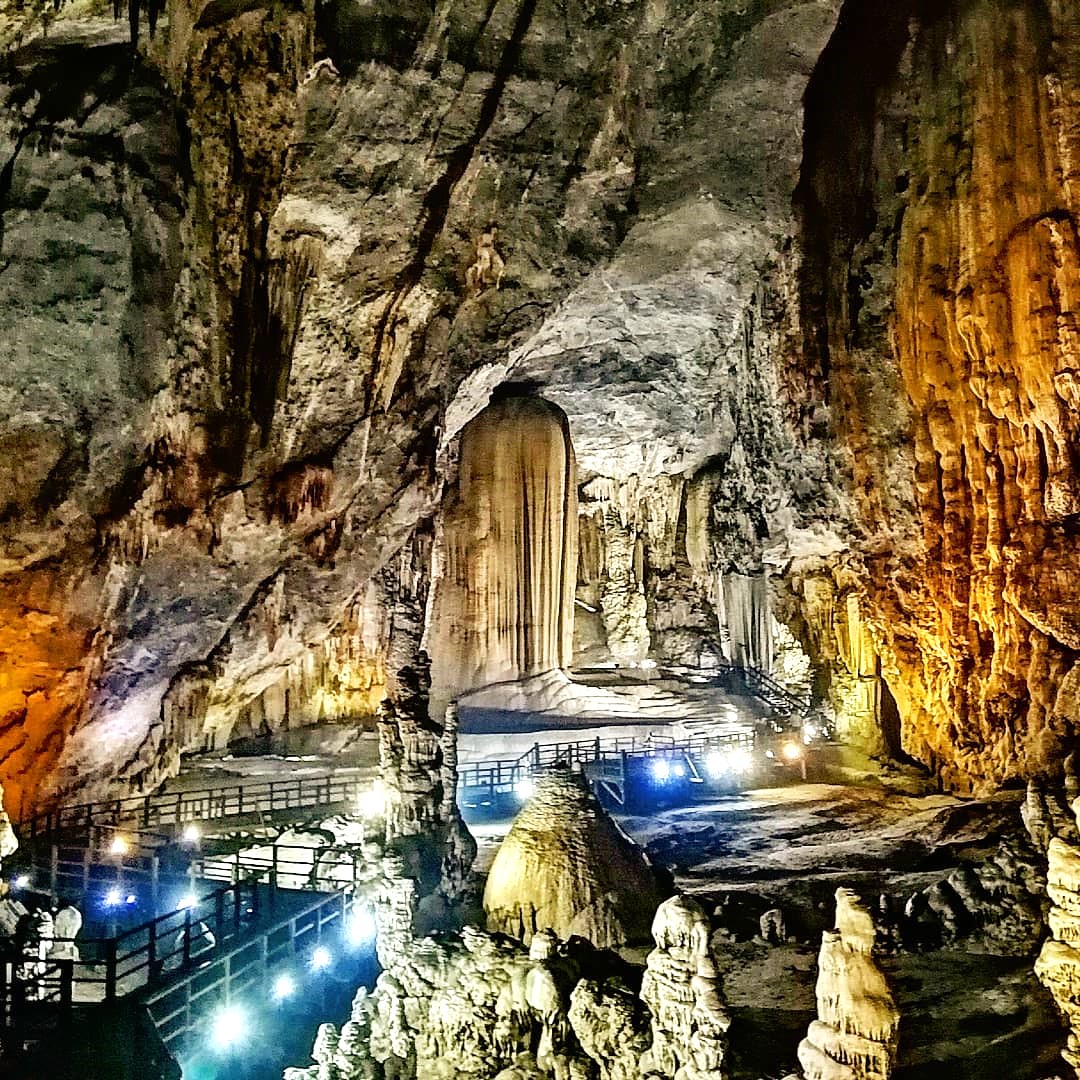Introduction to Phong Nha-Ke Bang National Park
Phong Nha-Ke Bang National Park, a UNESCO World Heritage Site since 2003, is a testament to Vietnam’s breathtaking natural beauty. Nestled in Quang Binh province, this awe-inspiring park spans an impressive 123,326 hectares, showcasing remarkable geological formations, extensive cave systems, and rich biodiversity. It serves not only as a refuge for diverse wildlife but also as a significant site for scientific research and ecotourism.
Geological Significance and Features
A Geological Marvel
The park is located within the Annamite Mountain Range and is characterized by its complex karst landscape, a true geological wonder. This unique feature results from limestone plateaux that have formed over 400 million years, dating back to the Palaeozoic era. Can you imagine standing before stunning limestone formations? Among these is the iconic Phong Nha Cave, which stretches over 44.5 kilometers. Such geological wonders solidify Phong Nha-Ke Bang as one of the most significant limestone karst ecosystems in the world.
Biodiversity and Ecosystems
The biodiversity within Phong Nha-Ke Bang is astonishing. The park is home to over 2,700 vascular plant species and more than 800 vertebrate species, including an array of mammals, reptiles, amphibians, and birds. This high level of biodiversity underscores the ecological importance of Phong Nha-Ke Bang, as many species are endemic to this region, uniquely adapted to thrive in its intricate cave environments.
Unique Ecosystems and Conservation
Visitors exploring the park will encounter ecosystems rich in endemism. For example, there are 133 globally threatened plant species and 104 threatened vertebrate species, including endangered mammals like the Large-antlered Muntjac and the critically endangered Saola. Why is it essential to protect these ecosystems? They represent a crucial component of Southeast Asia’s biodiversity and contribute to the global ecological balance.
The Name and Historical Context
Significance of “Phong Nha-Ke Bang”
The name “Phong Nha-Ke Bang” is steeped in historical and cultural significance. “Phong,” meaning “wind,” and “Nha,” meaning “teeth,” conjure images of winds gently flowing through rugged landscapes. This name not only emphasizes the park’s natural beauty but also honors the iconic Phong Nha Cave, a landmark that has captivated visitors since the French colonial era. By incorporating this landmark in the park’s title, it encourages exploration of its rich cultural and natural heritage.

Activities and Exploration
Adventure Awaits
Visitors to Phong Nha-Ke Bang can indulge in a plethora of activities, from exploring its famous caves to trekking through lush jungles. Guided tours offer a chance to marvel at stunning stalactites and stalagmites while learning about the park’s geological history. Can you envision trekking through dense forests filled with exotic flora and fauna? Knowledgeable guides lead guests on jungle treks, providing insights into the local ecosystems and biodiversity.
Discovering Hidden Gems
Exploration of the caves began in the 1990s, revealing incredible finds such as Son Doong Cave, recognized as the largest cave in the world. Another highlight is the breathtaking Paradise Cave, discovered in 2005, showcasing the stunning beauty of Phong Nha-Ke Bang. Each visit unveils new wonders, making it a must-see destination for adventurers and nature lovers alike.
Management and Conservation Efforts
Protection and Challenges
As one of the largest protected karst landscapes in Southeast Asia, Phong Nha-Ke Bang is safeguarded by a 220,055-hectare buffer zone. This management framework includes three distinct zones: strict protection, ecological restoration, and administrative areas. What challenges does the park face? Despite these efforts, threats such as wildlife poaching and illegal timber harvesting persist. Environmental Impact Assessments (EIAs) are crucial in ensuring the park’s geological, biological, and ecological values remain intact.
Sustainable Tourism Practices
To manage the increasing influx of tourists, the park requires visitors to hike with licensed tour operators, ensuring responsible exploration. Local operators offer various trekking tours, allowing guests to immerse themselves in the beauty of Phong Nha-Ke Bang without compromising its integrity. This approach not only protects the park’s delicate ecosystems but also supports the local economy, creating a win-win situation for conservation and community development.
The Importance of Phong Nha-Ke Bang National Park
Ecological Significance
The park serves as a habitat for 1,394 animal species and 2,952 plant species, with many listed in Vietnam’s Red Book and the IUCN Red List. Its ecosystems play a critical role in water conservation and maintaining regional biodiversity, supporting not only wildlife but also the local communities that depend on its resources.
Tourism and Economic Impact
Phong Nha-Ke Bang attracts visitors from around the globe, making tourism a vital component of the local economy. By promoting sustainable tourism practices, the park aims to balance ecological preservation with economic development, ensuring that both the environment and local communities thrive.
Management and Conservation Efforts
Organizational Structure
The management of Phong Nha-Ke Bang National Park is organized into several departments, each focusing on key areas:
- Administration: Handles personnel organization and administrative functions.
- Financial Planning: Manages plans related to conservation, tourism, and investments.
- Science and International Cooperation: Conducts research and collaborates with global organizations.
- Tourism Center: Organizes tourism activities at major attractions like Phong Nha Cave and Chay River.
- Conservation Center: Focuses on rescue operations and raising awareness about local ecosystems.
Conservation Activities
To protect its unique resources, the management board implements various activities:
- Public Awareness Campaigns: Educating local communities and tourists about biodiversity conservation.
- Wildlife Protection: Monitoring illegal activities to ensure the safety of endangered species.
- Research and Eco-Tourism Development: Collaborating with researchers to study biodiversity and promote sustainable tourism practices.
Conclusion
Phong Nha-Ke Bang National Park is not merely a natural wonder; it is a vital component of Vietnam’s ecological and cultural landscape. Its breathtaking beauty and rich biodiversity necessitate ongoing conservation efforts to ensure future generations can appreciate and enjoy its wonders. Through sustainable tourism and effective management, Phong Nha-Ke Bang continues to thrive as one of Vietnam’s premier natural attractions, offering a glimpse into the country’s rich natural heritage. Will you be the next to explore the enchanting beauty of Phong Nha-Ke Bang?

